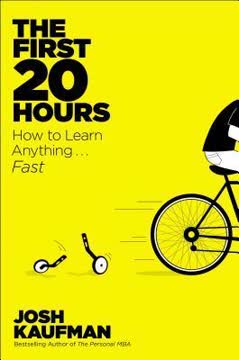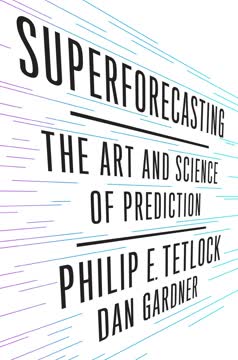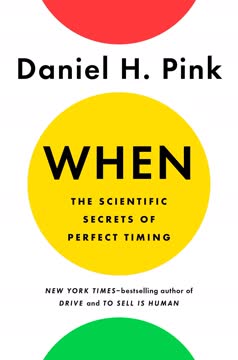Key Takeaways
1. Loss aversion drives irrational decision-making
Sensing a loss as a result of the high price, the shoppers can't help but put the carton back on the shelf.
Fear of loss. Loss aversion is a powerful psychological force that causes people to overreact to potential losses compared to equivalent gains. This leads to irrational decision-making in various contexts:
- Financial decisions: Investors hold onto losing stocks too long, hoping to break even
- Consumer behavior: Shoppers are more sensitive to price increases than decreases
- Business: Companies continue investing in failing projects to avoid admitting losses
Tenerife disaster. The 1977 Tenerife airport disaster, where two planes collided killing 583 people, illustrates how loss aversion can lead to catastrophic outcomes. The KLM pilot, eager to avoid delays and potential penalties, took off without clearance in dense fog. His aversion to the "loss" of time and reputation overrode safety protocols and rational decision-making.
Overcoming loss aversion. To counter loss aversion, adopt a long-term perspective and focus on overall goals rather than short-term losses. For example, when investing, stick to a predetermined strategy instead of reacting emotionally to market fluctuations. In daily life, recognize when fear of loss is driving decisions and consciously evaluate whether the potential loss is truly significant in the grand scheme.
2. Commitment bias keeps us on failing paths
The deeper the hole they dig themselves into, the more they continue to dig.
Sunk cost fallacy. Commitment bias, also known as the sunk cost fallacy, causes people to continue investing time, money, or effort into a failing course of action simply because they've already invested resources. This irrational behavior is driven by:
- Desire to avoid admitting mistakes
- Hope that additional investment will turn things around
- Emotional attachment to past decisions
Historical examples:
- Vietnam War: LBJ escalated U.S. involvement despite mounting evidence of futility
- Concorde jet: Governments continued funding despite economic infeasibility
Breaking free. To overcome commitment bias:
- Evaluate decisions objectively, as if you were just entering the situation
- Focus on future prospects rather than past investments
- Seek outside perspectives to challenge your assumptions
- Practice "killing your darlings" - be willing to abandon pet projects or ideas
3. Value attribution skews our perceptions
Without realizing it, the commuters attributed the value they perceived—the baseball cap, the jeans, the subway venue—to the quality of the performance.
First impressions matter. Value attribution is our tendency to assign qualities to people or things based on initial perceived value, rather than objective data. This bias affects various aspects of life:
- Job interviews: Candidates judged by appearance or alma mater rather than skills
- Consumer behavior: Products perceived as higher quality due to packaging or price
- Social interactions: People treated differently based on clothing or social status
Joshua Bell experiment. A world-renowned violinist played in a subway station, largely ignored by passersby who assumed he was just another street performer. This illustrates how context and appearance can overshadow true quality or talent.
Overcoming value attribution:
- Consciously question initial judgments
- Seek objective data and multiple perspectives
- Practice "propositional thinking" - keep evaluations tentative and consider alternatives
- Be open to revising opinions based on new information
4. Diagnosis bias leads to hasty judgments
Once a player is tagged as a "low pick," most coaches let that diagnosis cloud their entire perception of him.
Labeling and its consequences. Diagnosis bias is our tendency to label people or situations based on initial impressions and then ignore evidence that contradicts those labels. This can lead to self-fulfilling prophecies and missed opportunities:
- Education: Students labeled as "gifted" or "troubled" may be treated differently, affecting their performance
- Healthcare: Doctors may overlook symptoms that don't fit initial diagnoses
- Workplace: Employees pigeonholed into certain roles may be passed over for promotions
NBA draft study. Research showed that a player's draft order continued to predict playing time even years into their career, regardless of actual performance. This demonstrates how initial labels can persist despite contradictory evidence.
Mitigating diagnosis bias:
- Use structured evaluation processes to focus on objective criteria
- Regularly reassess judgments and be open to changing opinions
- Seek diverse perspectives to challenge initial impressions
- Practice "personal construct theory" - consider multiple interpretations of situations
5. Fairness sways our choices beyond reason
Rather than accept the money that had been offered, most participants who were presented with an unfair split rejected it, opting instead to walk away empty-handed.
Irrational pursuit of justice. Our sense of fairness can lead to decisions that go against our own self-interest. This tendency is deeply ingrained and varies across cultures:
- Ultimatum game: People reject unfair offers even when it means getting nothing
- Workplace: Employees may be more satisfied with lower salaries if they perceive the process as fair
- International relations: Countries may reject beneficial agreements if they feel disrespected
Cultural variations. Experiments with the Ultimatum game across cultures reveal different perceptions of fairness:
- Western cultures: Expect close to 50/50 splits
- Machiguenga tribe (Peru): Accept any offer as a gift
- Russian audiences: Deliberately give wrong answers on game shows to prevent individuals from getting rich
Balancing fairness and rationality:
- Recognize when fairness concerns are overriding self-interest
- Consider long-term relationships and reputations, not just short-term gains
- Communicate decision-making processes to increase perceived fairness
- In negotiations, focus on interests and objective criteria rather than positions
6. Financial incentives can backfire
Paid townspeople were less willing to host the dump, and compensated test takers underperformed on the exam.
The crowding out effect. Introducing monetary rewards can sometimes reduce motivation and performance, particularly for tasks that have intrinsic value. This counterintuitive phenomenon occurs because:
- Financial incentives can shift focus from intrinsic to extrinsic motivation
- Small rewards can trivialize important tasks
- Money can change the perceived nature of the activity from social to economic
Examples of backfiring incentives:
- Swiss nuclear waste study: Offering compensation reduced willingness to accept waste storage
- Israeli daycare late pickup fees: Introducing fines increased late pickups
- Blood donation: Paying for blood can reduce donations
Effective motivation:
- For complex tasks, focus on intrinsic motivators (autonomy, mastery, purpose)
- Use non-monetary rewards when possible (recognition, opportunities for growth)
- If using financial incentives, ensure they're substantial enough to be meaningful
- Communicate the purpose and importance of tasks, not just the reward
7. Dissent is crucial for balanced group decisions
Occasionally—maybe once or twice a year—the whole Court shifts.
The power of the lone voice. Dissent in group settings, even when initially unpopular, serves several crucial functions:
- Prevents groupthink and challenges assumptions
- Encourages consideration of alternative viewpoints
- Can sway opinions and lead to better decisions
Supreme Court example. Justice Breyer explained how dissenting opinions, even when they don't change the immediate outcome, force the majority to refine their arguments and can influence future legislation.
Fostering productive dissent:
- Create a culture that values diverse opinions
- Assign someone to play "devil's advocate" in important discussions
- Implement structured decision-making processes that give voice to all perspectives
- Train leaders to actively seek out and consider dissenting views
8. Overcoming psychological biases requires mindfulness
Simply realizing that we're making judgments based on assumptions about a situation or a person's value can free us from this sway.
Self-awareness is key. Recognizing and countering our own psychological biases is an ongoing process that requires constant vigilance and practice. Strategies for developing this mindfulness include:
- Education: Learn about common cognitive biases and how they manifest
- Reflection: Regularly examine your own decision-making processes
- Seek diverse perspectives: Surround yourself with people who think differently
- Use structured decision-making tools: Implement checklists, pre-mortems, and other techniques to combat bias
Practical applications:
- Investing: Develop and stick to a long-term strategy to avoid emotional reactions
- Hiring: Use structured interviews and objective criteria to reduce bias
- Personal relationships: Practice active listening and consider others' perspectives
Continuous improvement. Overcoming psychological biases is not about achieving perfection, but about making incremental improvements in our thinking and decision-making. By cultivating awareness and implementing targeted strategies, we can gradually reduce the impact of irrational influences on our lives and choices.
Last updated:
FAQ
What's "Sway: The Irresistible Pull of Irrational Behavior" about?
- Exploration of Irrational Behavior: The book delves into the psychological forces that lead people to make irrational decisions, even when they believe they are acting rationally.
- Real-life Examples: It uses a variety of real-world scenarios, from business to personal life, to illustrate how these irrational forces manifest.
- Psychological Forces: The authors identify and explain several key psychological forces, such as loss aversion, value attribution, and the diagnosis bias, that sway our decision-making.
- Interdisciplinary Approach: The book combines insights from psychology, economics, and sociology to provide a comprehensive understanding of irrational behavior.
Why should I read "Sway: The Irresistible Pull of Irrational Behavior"?
- Understand Decision-Making: It offers valuable insights into why we make the decisions we do, helping readers become more aware of their own biases.
- Improve Personal and Professional Life: By recognizing these irrational forces, readers can make better decisions in both their personal and professional lives.
- Engaging and Accessible: The book is written in an engaging style, making complex psychological concepts accessible to a broad audience.
- Practical Applications: It provides practical advice on how to counteract these irrational forces, making it useful for anyone looking to improve their decision-making skills.
What are the key takeaways of "Sway: The Irresistible Pull of Irrational Behavior"?
- Loss Aversion: People tend to overreact to potential losses, which can lead to irrational decision-making.
- Value Attribution: We often assign value based on initial perceptions, which can cloud our judgment.
- Diagnosis Bias: Once we label a person or situation, we tend to ignore evidence that contradicts our initial assessment.
- Commitment and Consistency: People have a strong desire to remain consistent with their past actions, even when it is not in their best interest.
How does "Sway" explain the concept of loss aversion?
- Definition: Loss aversion is the tendency to prefer avoiding losses over acquiring equivalent gains.
- Impact on Decisions: This bias can lead individuals to make irrational choices, such as holding onto losing investments or avoiding necessary risks.
- Real-world Examples: The book provides examples like Captain Van Zanten's decision-making in the Tenerife air disaster to illustrate how loss aversion can have catastrophic consequences.
- Overcoming Loss Aversion: The authors suggest adopting a long-term perspective to mitigate the effects of loss aversion.
What is value attribution according to "Sway"?
- Initial Perceptions: Value attribution is the tendency to assign value to a person or object based on initial perceptions rather than objective data.
- Influence on Behavior: This can lead to misjudgments, such as underestimating a valuable item found in a flea market or overvaluing a brand-name product.
- Examples in the Book: The authors discuss how Joshua Bell's subway performance was ignored due to value attribution, despite his status as a world-class violinist.
- Counteracting Value Attribution: Being mindful and questioning initial perceptions can help counteract this bias.
How does "Sway" describe the diagnosis bias?
- Definition: Diagnosis bias is the tendency to label people or situations based on initial impressions and to ignore evidence that contradicts these labels.
- Impact on Judgments: This bias can lead to persistent misjudgments, affecting everything from hiring decisions to personal relationships.
- Illustrative Examples: The book uses examples like NBA draft picks and job interviews to show how diagnosis bias can skew perceptions and decisions.
- Mitigating Diagnosis Bias: The authors recommend using structured approaches and considering multiple perspectives to reduce the influence of this bias.
What role does commitment play in irrational behavior according to "Sway"?
- Commitment to Past Actions: People often stick to their past decisions, even when they are no longer beneficial, due to a desire for consistency.
- Examples in the Book: The authors discuss how commitment led to poor decisions in contexts like the Vietnam War and business investments.
- Psychological Underpinnings: Commitment is driven by a need to justify past actions and avoid the discomfort of admitting mistakes.
- Breaking Free from Commitment: The book suggests adopting a fresh perspective and being willing to change course when necessary.
What are some practical applications of the concepts in "Sway"?
- Improving Decision-Making: By understanding these psychological forces, individuals can make more rational decisions in both personal and professional contexts.
- Enhancing Negotiations: Recognizing biases like fairness and commitment can lead to more effective negotiation strategies.
- Better Hiring Practices: Awareness of diagnosis bias can improve hiring decisions by focusing on objective criteria rather than first impressions.
- Personal Growth: Understanding these sways can lead to greater self-awareness and personal development.
What are the best quotes from "Sway" and what do they mean?
- "People aren't rational." This quote encapsulates the book's central thesis that human behavior is often driven by irrational forces.
- "The deeper the hole they dig themselves into, the more they continue to dig." This highlights the concept of commitment and how it can lead to irrational persistence in failing endeavors.
- "A rose by any other name really doesn’t smell as sweet." This challenges the notion that value is inherent, emphasizing the role of perception in value attribution.
- "We’re all susceptible to the irresistible pull of irrational behavior." This underscores the universality of the psychological forces discussed in the book.
How does "Sway" address the concept of fairness?
- Procedural Justice: The book explains that people are often more concerned with the fairness of the process than the outcome itself.
- Cultural Differences: It highlights how perceptions of fairness can vary across cultures, affecting behavior in different contexts.
- Impact on Decision-Making: Fairness can lead to irrational decisions, such as rejecting a beneficial offer because it seems unfair.
- Practical Implications: Understanding fairness can improve negotiations and interpersonal relationships by focusing on transparent and equitable processes.
How can understanding "Sway" help in professional settings?
- Better Leadership: Leaders can use insights from the book to understand and mitigate irrational behaviors in their teams.
- Effective Communication: Recognizing biases like value attribution can improve communication and collaboration within organizations.
- Strategic Planning: Awareness of commitment and loss aversion can lead to more flexible and adaptive strategic planning.
- Conflict Resolution: Understanding fairness and procedural justice can aid in resolving conflicts and fostering a positive work environment.
What is the significance of the Tenerife air disaster in "Sway"?
- Illustration of Loss Aversion: The disaster is used to demonstrate how loss aversion can lead to catastrophic decision-making.
- Commitment and Consistency: Captain Van Zanten's actions exemplify how commitment to a course of action can override rational judgment.
- Human Error in High-Stakes Situations: The incident highlights the importance of understanding psychological forces in preventing human error.
- Learning from Mistakes: The book uses this example to emphasize the need for awareness and strategies to counteract irrational behavior in critical situations.
Review Summary
Sway explores the irrational behaviors and decisions humans make, drawing on psychological research and real-world examples. Readers found it engaging and insightful, praising its accessibility and thought-provoking content. Many appreciated the book's exploration of cognitive biases and decision-making processes. Some critics felt it lacked depth or originality compared to similar works. Overall, reviewers considered it a quick, entertaining read that provides a solid introduction to behavioral economics, though opinions varied on its effectiveness in offering practical solutions to combat irrational behavior.
Similar Books








Download PDF
Download EPUB
.epub digital book format is ideal for reading ebooks on phones, tablets, and e-readers.





